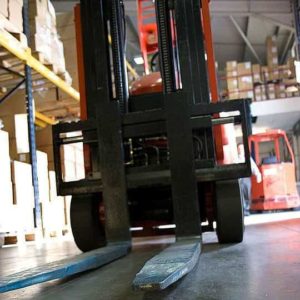In the United States, there are conventions for nearly every industry. Interested individuals and company representatives get to learn about the latest products and programs in their field, view or even use samples and talk to representatives. Each company involved typically creates a giant booth with extensive advertising.
It takes a lot of work to set up these booths and frequently, the structures are made of heavy steel beams that need to be assembled. The workers hired to set up and tear down the booths are not only surrounded by heavy objects but they also are required to work with heavy machinery, which, if not operated appropriately, can be incredibly dangerous. This article is brought to you by our forklift accident lawyers.
A 33-year-old man was working with his team to tear down after a technology convention and show when an accident occurred that would change how he walked forever.
Another man, who was working for a different contractor, was driving a forklift. Without the aid of a spotter, he made a left hand turn directly into the victim. The forklift pinned the worker’s foot 
When a part of the body is degloved, it actually removes a large section of skin from the tissue below, cutting off all blood supply to the skin. In this case, the worker found that the skin from his foot had been completely removed.
He was rushed to the hospital and underwent immediate surgery. It took a total of seven surgeries for doctors to get him to his maximum healing point and this included several skin grafts and muscle grafting. Despite all of this, he has been left with a disfigured foot, scarring, and severe arthritis, causing him to walk with a limp. His doctors have informed him that he may also need additional surgeries in the future.
His medical expenses added up to nearly $600,000.
After his accident, the worker filed a lawsuit against both the man who hit him with the forklift and the company the man worked for, alleging that the forklift operator was negligent for failing to keep a proper lookout and that his company was negligent because not only did they train their employee properly, they also failed to assign a three-person spotter crew to direct him as he drove the heavy machinery.
The parties failed to reach a settlement agreement and the case went to trial. In the end, the jury awarded the plaintiff $15.2 million in damages, including $3 million in punitive damages against the company.
These damages, also known as exemplary damages, are typically awarded when a jury or judge determines that the defendant should be punished. The hope is that by making them pay additional damages, the defendant will be deterred from engaging the behavior that lead to another party being hurt.
It’s quite possible that he did file for workers’ compensation, however, while this claim would prevent him from suing his employer, it does not prevent him from pursuing legal action against a third party. In fact, in many cases, an injured construction worker is eligible to file both a personal injury lawsuit and a workers’ compensation claim.
The amount that a case is worth depends on the type of accident the plaintiff was involved in and the injuries that were sustained. This means that there is no way to concretely determine exactly 
Unlike this case, the majority of construction accident lawsuits end with a settlement agreement. This provides the plaintiff with the knowledge that they will be obtaining a specific amount quickly, saving all parties involved time and money.
This doesn’t mean that going to trial is an experience to be feared. With a great legal team to collect and present the necessary evidence, plaintiffs can get what they need to move forward after an accident.
Did this article interest you? Read a similar one here: https://banvillelaw.com/large-settlementfor-union-painter/